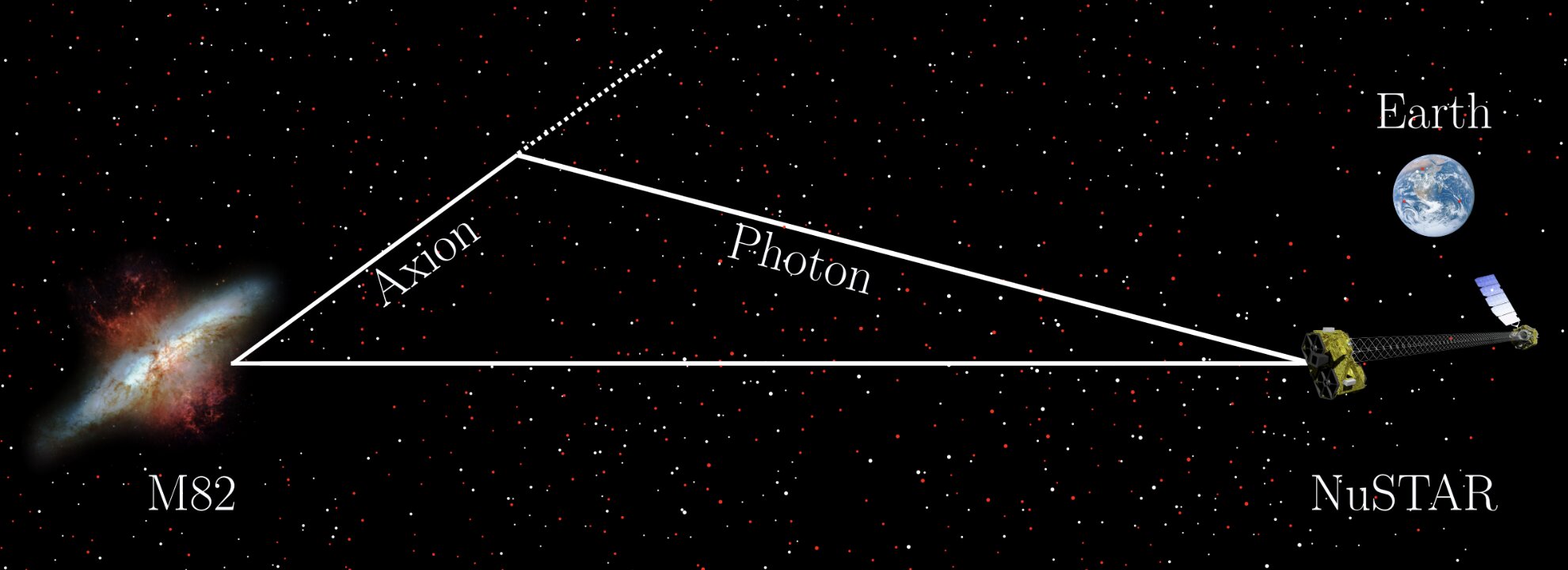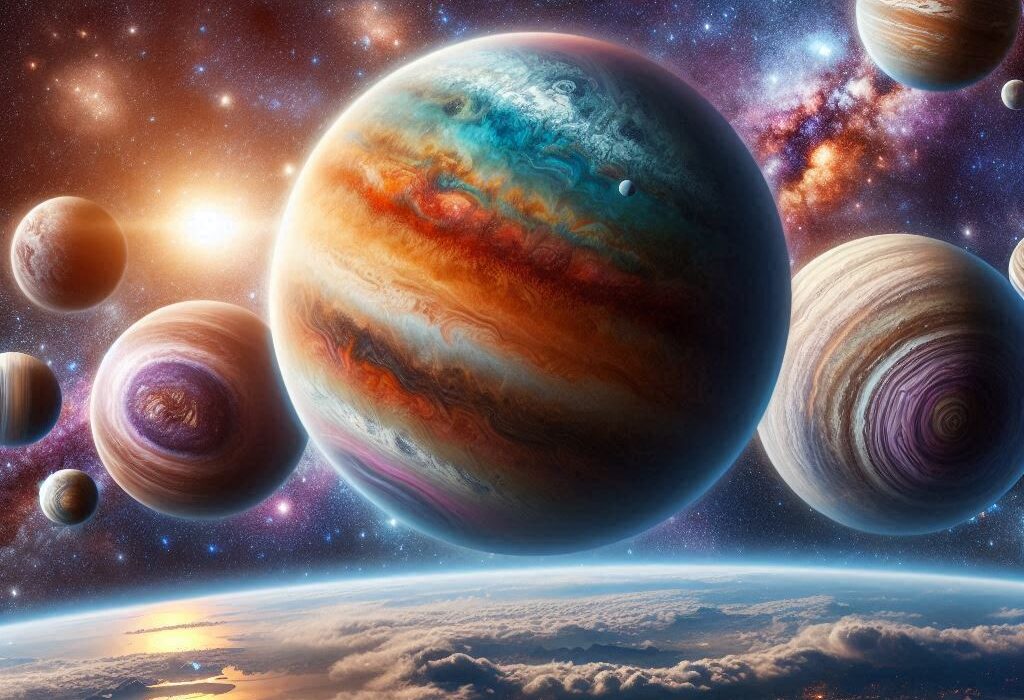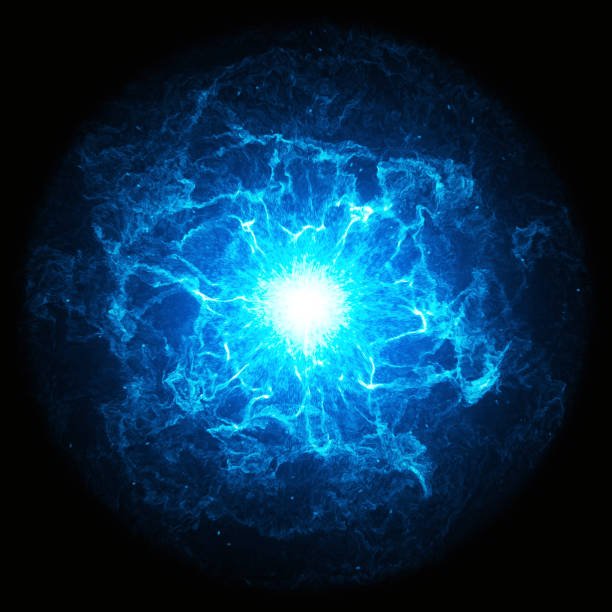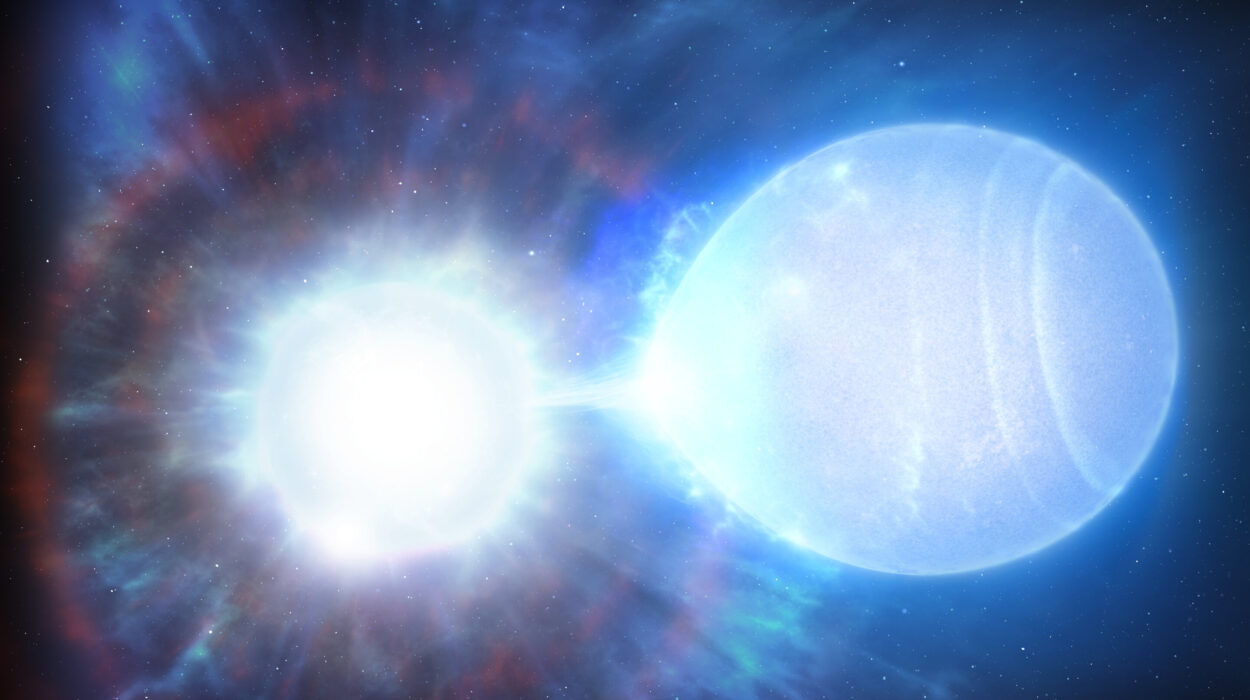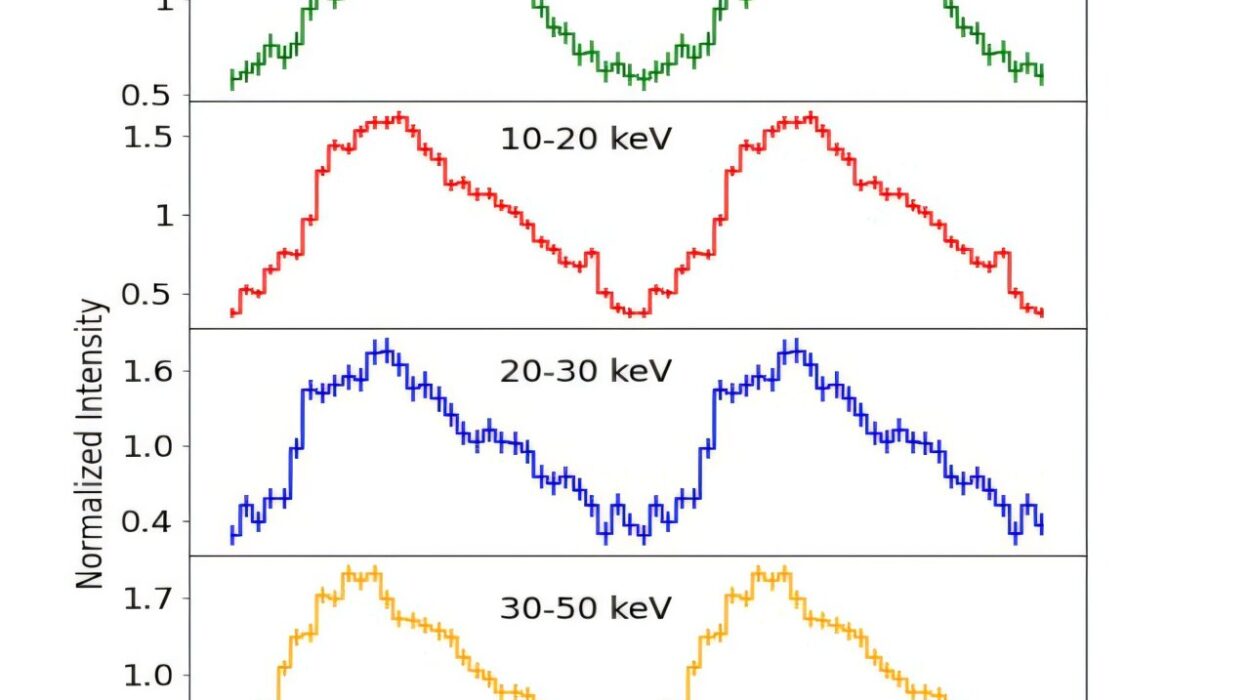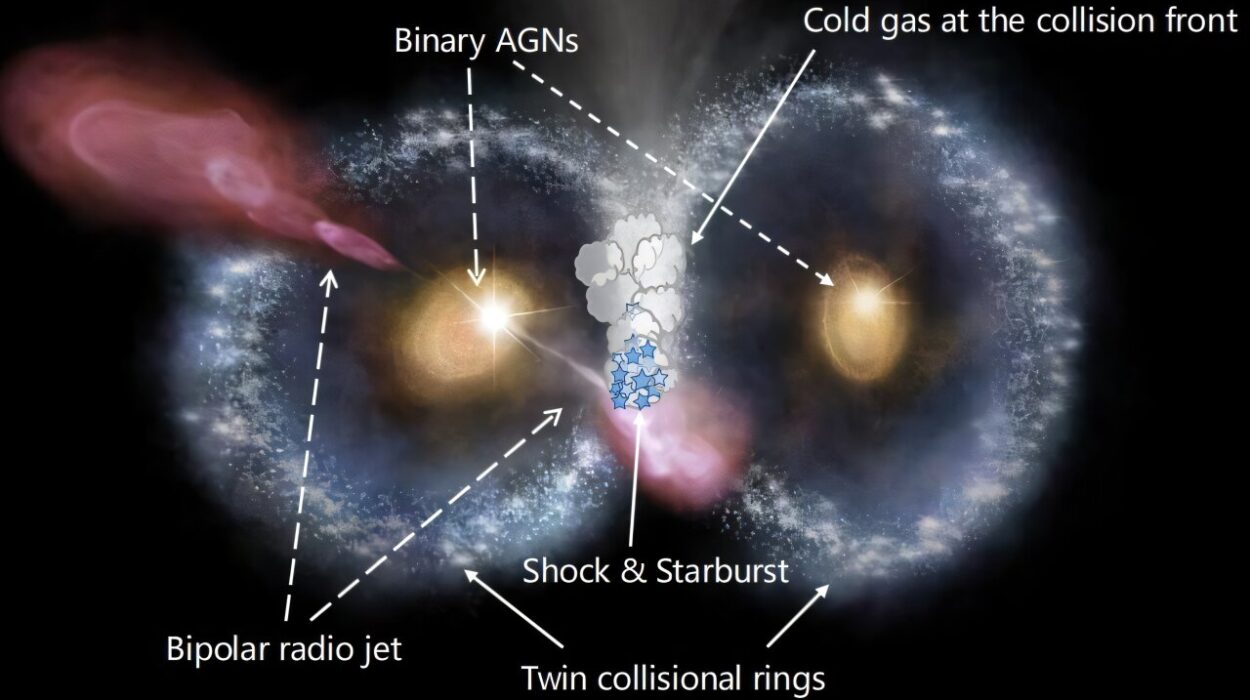In the vast silence of space, something is missing—something massive, invisible, and stubbornly elusive. For decades, scientists have tried to put a face to the dark matter that appears to glue galaxies together, yet never reveals itself in light. Now, in a pair of bold and poetic investigations, astronomers have turned their telescopes to the blazing hearts of starburst galaxies, hoping to catch a whisper of an exotic particle that could finally solve one of the most profound mysteries of the cosmos.
Their quarry? The axion—a hypothetical subatomic ghost born from equations written nearly half a century ago. It does not shimmer, glow, or cast a shadow. But if it exists, it might be the key to everything we can’t see in the universe.
A Quiet Search in a Noisy Sky
Two international teams, working independently and nearly simultaneously, aimed their scientific curiosity at one of the universe’s more dramatic locales: M82, the Cigar Galaxy. Roughly 12 million light-years from Earth, this galaxy burns with furious stellar birth, cranking out new stars ten times faster than our Milky Way. This frenzied environment, scientists theorized, could be the perfect birthplace for axions—particles that emerge in the searing furnaces of stars, travel through space, and may, just may, convert into faint whispers of X-ray light.
The teams, one led by Edoardo Vitagliano from institutions across Europe and the U.S., and another from UC Berkeley, harnessed the sharp eyes of NASA’s NuSTAR telescope, a spacecraft specially designed to catch high-energy X-ray emissions. Their plan: Look not directly at the stars themselves, but at the quiet halo of space around them. There, the axions—if real—might decay into photons, casting a strange new glow into the dark.
It was a cosmic fishing expedition, where the bait was theoretical, and the catch would be no more than a change in light—a ripple of energy that didn’t belong.
Axions: The Particle That Refuses to Be Seen
First proposed in the late 1970s, axions were originally dreamed up to solve an internal puzzle in the Standard Model of particle physics, the framework that explains nearly everything we know about particles and forces. But since then, physicists have come to believe axions—or axion-like particles—could also be the particles that make up dark matter, the invisible scaffolding of the universe.
And yet, the search for them has been elusive and at times maddening. Despite decades of lab-based experiments and skyward gazes, not a single axion has been definitively spotted. Even powerful machines like the Large Hadron Collider have drawn a blank. Still, hope remains, especially in the quieter corners of the universe.
“In this regard, axions are some of the best candidates at the moment for physics beyond the standard model,” said Vitagliano. “It’s the type of puzzle that forces you to search in unfamiliar places—and that’s exactly what we’re doing.”
Galaxies as Natural Particle Colliders
Massive stars, especially those in galaxies like M82, operate like natural nuclear reactors. Inside their blazing cores, temperatures soar to 100 million Kelvin or more—conditions intense enough to potentially forge axions through photon interactions in the star’s plasma. These axions would then escape the star’s crushing interior, travel through space, and decay into X-rays far from their birthplace.
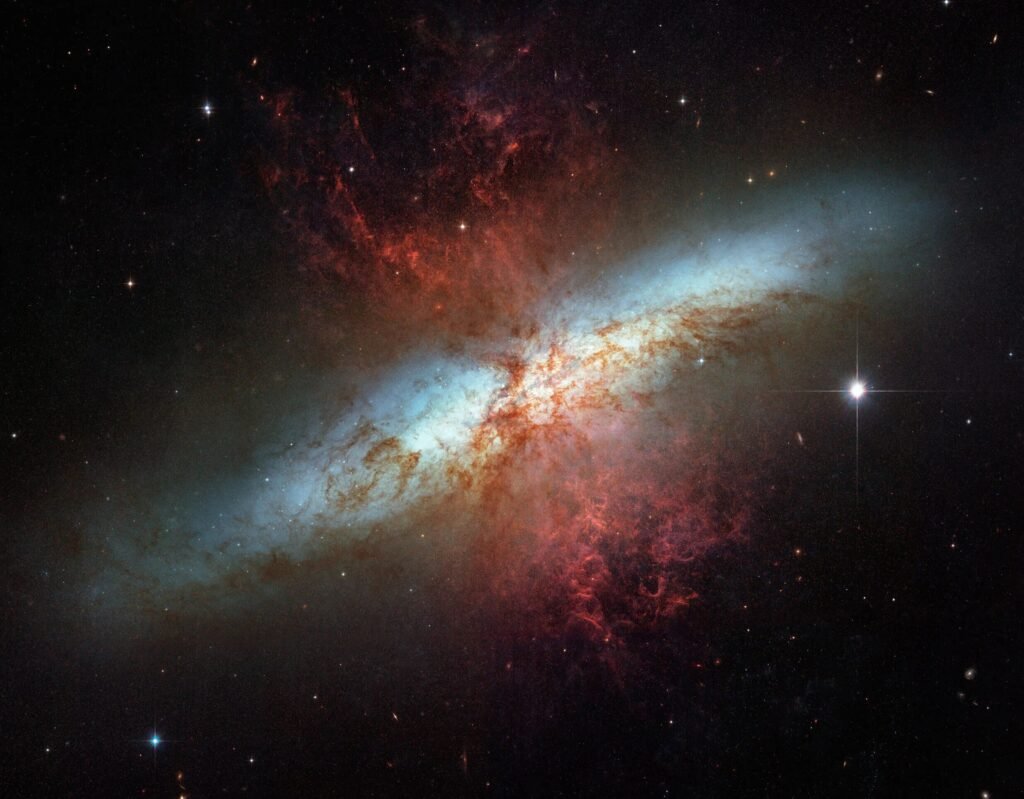
It’s a slow process. An axion might take tens of thousands of years to transform. But when it finally does, the photons it produces should have unique traits—a hard X-ray spectrum and a wide angular spread—that differentiate them from ordinary galactic X-ray emissions.
This is what both research teams searched for in NuSTAR’s archives: the telltale signs of a ghost particle dying into light.
Reading the Silence of the Universe
Both teams scoured over a million seconds’ worth of observations from NuSTAR, digging into the data for faint signals and spectral anomalies. What they found was… nothing. No extra glow. No spectral fingerprints. No echoes from the ghost world.
But in science, silence speaks volumes.
“The strength with which the axion interacts with the photon must be sufficiently small,” said Damiano Fiorillo, co-author of the Vitagliano-led paper. “And we have used this argument to obtain leading constraints on these feebly interacting particles.”
The absence of a signal allowed the teams to tighten the theoretical leash on the axion. By not seeing it, they’ve ruled out a whole chunk of possible axion masses and interaction strengths. In effect, they’ve made the ghost particle even ghostlier—narrowing the places it could be hiding.
A Symphony of Shadows
For Orion Ning and Benjamin Safdi at UC Berkeley, the idea started with a return to the basics.
“What if we just use the largest stellar populations we can think of—entire galaxies—to maximize axion production?” Ning recalled. That simple, elegant idea became a new kind of astrophysical “light-shining-through-walls” experiment. In this version, photons inside stars morph into axions, slip through space unseen, and then—if the conditions are just right—convert back into X-ray light as they pass through a galaxy’s magnetic fields.
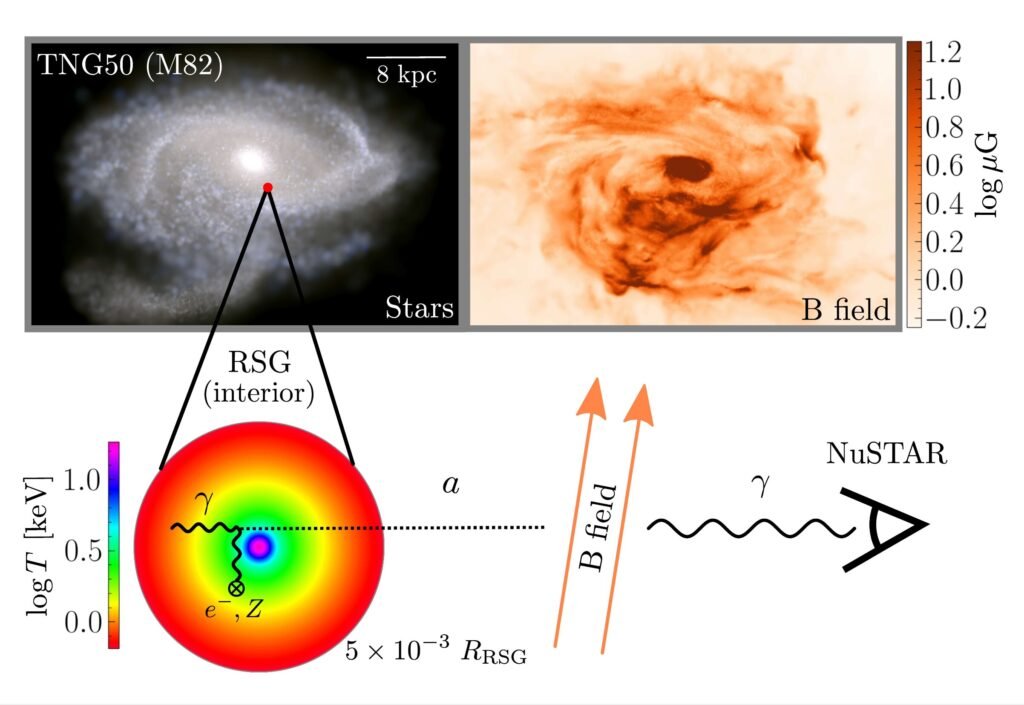
It’s an otherworldly game of interstellar hide-and-seek, played on the largest scales imaginable.
“We were able to probe a large swath of axion parameter space,” said Ning, “and by opening the door to using entire stellar populations, we believe we’ve made a real step forward in this hunt.”
Not the End, But a New Beginning
While no axions were found this time, neither team sees this as a setback. On the contrary, it marks a new chapter in axion astronomy. The studies demonstrate that galaxies like M82 can be transformed into cosmic laboratories, natural testbeds for probing the subtle physics that defy Earth-based experiments.
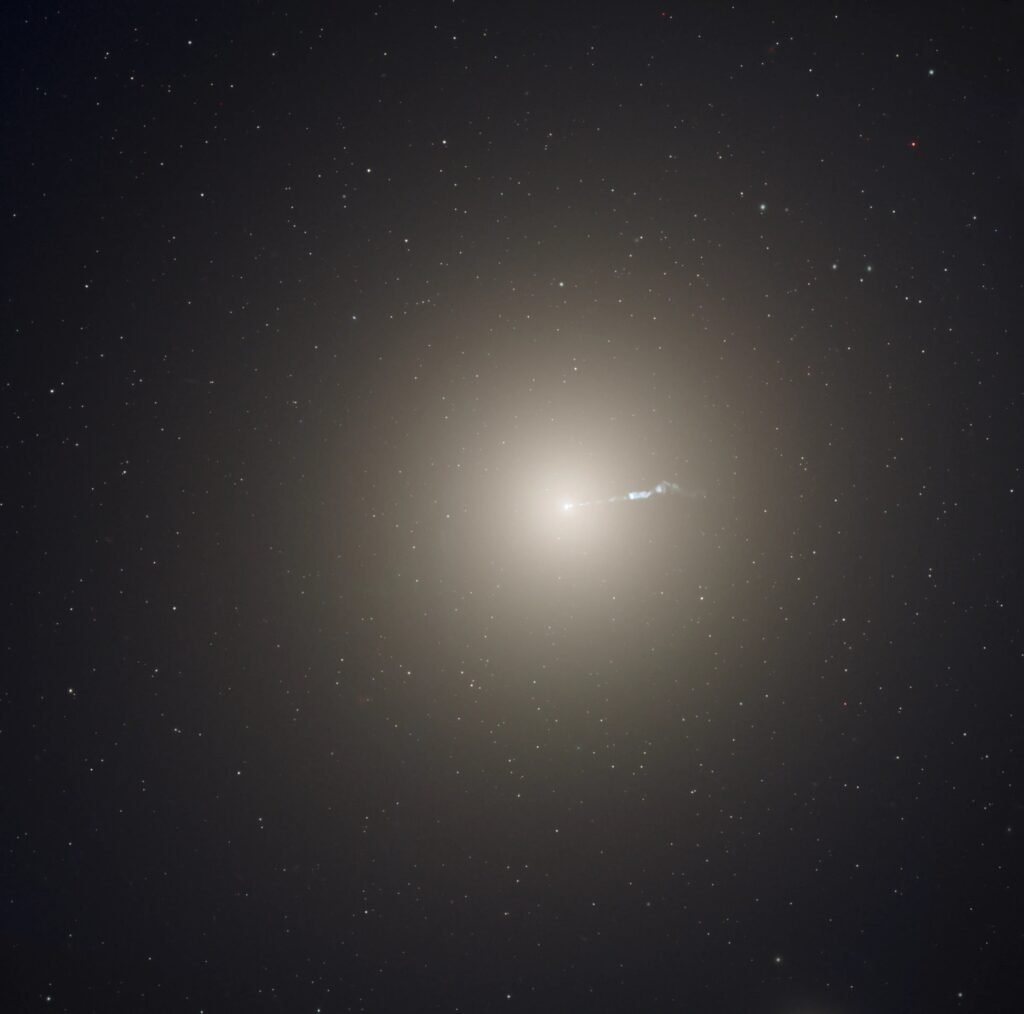
More importantly, they open the possibility of studying other axion interactions—such as those with electrons or nucleons—across a wider range of galactic environments. Future observations using additional space telescopes, like INTEGRAL, may further illuminate the landscape.
“There are a variety of other ideas we are playing with,” said Ning. “The issue is that we don’t know exactly how the axion might show up, so we have to keep exploring all the directions we can think of.”
Meanwhile, Vitagliano’s group is planning to expand their search beyond photon-coupled axions, looking at particle models that might accumulate in gravitational basins near stars, waiting to be detected in the gravitational pull of their birthplaces.
Why the Hunt for Axions Matters
In an era of precision cosmology and high-energy physics, the axion remains one of the last great unknowns. If discovered, it wouldn’t just solve the mystery of dark matter. It could unlock secrets of the early universe—of inflation, reheating, and why the universe didn’t collapse in on itself. It might even offer clues to physics beyond the Standard Model, a step toward the elusive “theory of everything” that Einstein once dreamed of.
And yet, it’s the quiet romance of this search that captures the imagination—the idea that somewhere, in the hush of deep space, particles born in the hearts of stars drift silently through the dark, waiting to become light again.
No, the axion has not yet shown its face. But the universe has offered another map, another path, another place to look. The search goes on—brighter, bolder, and more beautiful than ever.
References: Francisco R. Candón et al, NuSTAR Bounds on Radiatively Decaying Particles from M82, Physical Review Letters (2025). DOI: 10.1103/PhysRevLett.134.171004
Orion Ning et al, Leading Axion-Photon Sensitivity with NuSTAR Observations of M82 and M87, Physical Review Letters (2025). DOI: 10.1103/PhysRevLett.134.171003
